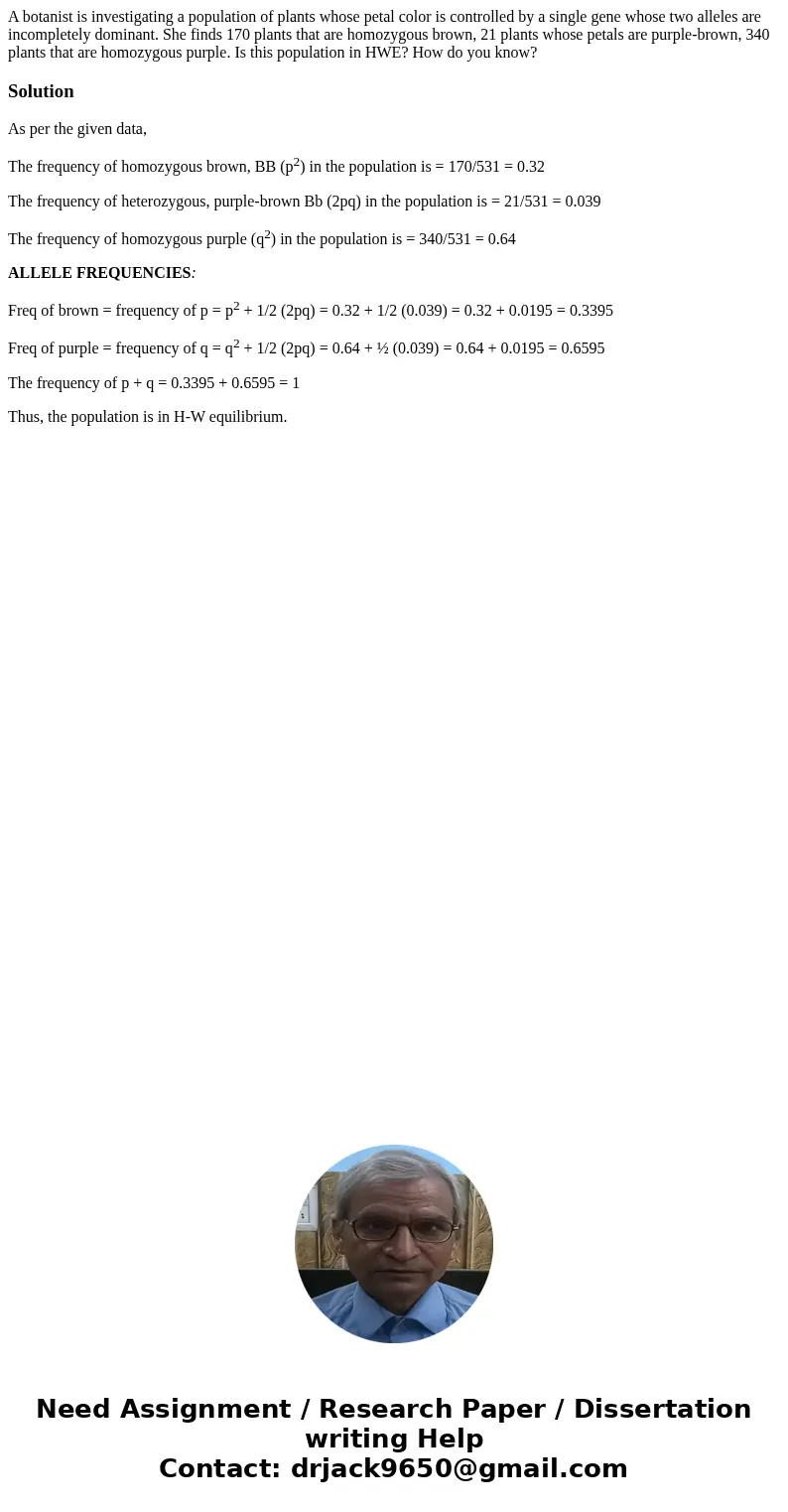A botanist is investigating a population of plants whose pet
A botanist is investigating a population of plants whose petal color is controlled by a single gene whose two alleles are incompletely dominant. She finds 170 plants that are homozygous brown, 21 plants whose petals are purple-brown, 340 plants that are homozygous purple. Is this population in HWE? How do you know?
Solution
As per the given data,
The frequency of homozygous brown, BB (p2) in the population is = 170/531 = 0.32
The frequency of heterozygous, purple-brown Bb (2pq) in the population is = 21/531 = 0.039
The frequency of homozygous purple (q2) in the population is = 340/531 = 0.64
ALLELE FREQUENCIES:
Freq of brown = frequency of p = p2 + 1/2 (2pq) = 0.32 + 1/2 (0.039) = 0.32 + 0.0195 = 0.3395
Freq of purple = frequency of q = q2 + 1/2 (2pq) = 0.64 + ½ (0.039) = 0.64 + 0.0195 = 0.6595
The frequency of p + q = 0.3395 + 0.6595 = 1
Thus, the population is in H-W equilibrium.

 Homework Sourse
Homework Sourse